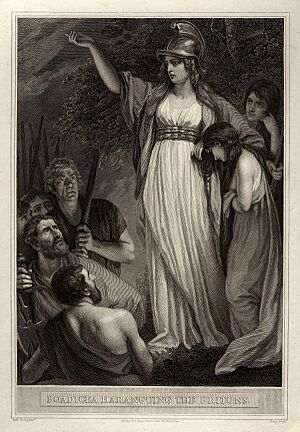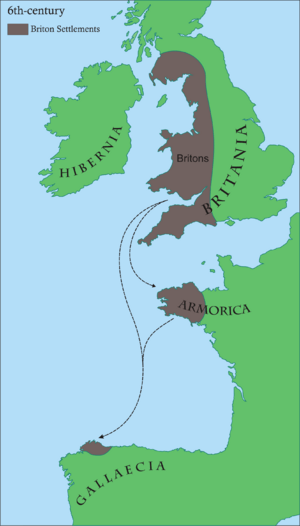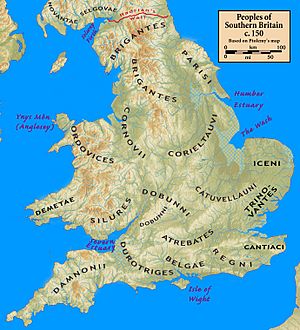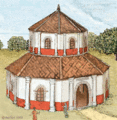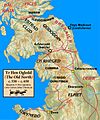Britons (Celtic people) facts for kids
The Britons were ancient people who lived in Great Britain. They spoke a Celtic language called Common Brittonic. They lived during the Iron Age, when the Romans ruled Britain, and after the Romans left.
When the Anglo-Saxons arrived and took over much of what is now England, some Britons moved. They went to places like Wales, Cornwall, and southern Scotland. Others even moved across the sea to a place they renamed Brittany. The Britons who stayed behind slowly became part of Anglo-Saxon society.
Contents
What's in a Name?
Around 330 BC, a Greek explorer named Pytheas sailed to the British Isles. In 326 BC, he landed and called the island "Prettanike" or "Brettainiai." This name later became "Britain."
When the Romans conquered Britain in 43 AD, they called the people living there Brittanni. They also knew about the different tribes of Britons. Roman writers said the Britons were "people harassed by hosts, who receive political exiles, who rebel, and who are among the remote peoples of the world." Monks writing in the 4th and 5th centuries also used the name Britanni. Some even used the shorter term Britto.
The Anglo-Saxon Chronicle, an old English history book, described Britain and its people. It said: "The island of Britain is eight hundred miles long and two hundred miles broad: and here are in the island five peoples: English, Brito-Welsh, Scottish, and Book-Latin."
Later, a Welsh scholar named John Rhys used the terms "Brittonic" and "Brythonic." He wanted clearer names for the people of Wales and the Welsh people in areas like Cumbria and Cornwall, instead of just calling them "Britons."
Ancient Celtic Tribes
During the Iron Age, Britain was home to many different Celtic tribes. When the Romans arrived, many of these tribes started to adopt Roman culture and the Latin language.
Tribes of Central Britain
- The Brigantes: They controlled a large area that later became much of Northern England.
- The Carvetii: They lived near the Solway Plain, just north of Hadrian's Wall.
- The Corieltauvi: These people lived in what is now the East Midlands.
- The Cornovii: They lived in the area that is now the West Midlands.
- The Parisii: They lived in what is now East Yorkshire.
Tribes of Southeastern Britain
- The Atrebates: They lived in what is now West Sussex and parts of Hampshire and Surrey.
- The Belgae: They were found in and around the county of Hampshire.
- The Cantiaci: They lived in and gave their name to the modern county of Kent.
- The Catuvellauni: They lived in areas that later became Hertfordshire, Bedfordshire, and Cambridgeshire.
- The Iceni: They lived in areas that later became Norfolk, Suffolk, Cambridgeshire, and Huntingdonshire.
- The Regnenses: They lived in what would become East Sussex and Surrey.
- The Trinovantes: They controlled Essex and parts of Hertfordshire and Middlesex.
Tribes of Western Britain
- The Deceangli: Their land included north-east Wales.
- The Demetae: They gave their name to Dyfed and also lived in modern Pembrokeshire and Carmarthenshire.
- The Dobunni: Their land included Northern Somerset, Bristol, and Gloucestershire.
- The Dumnonii: They lived in what would become Cornwall and Devon.
- The Durotriges: They lived in the area that later became Dorset and western Hampshire.
- The Gangani: They lived in much of northwestern Wales.
- The Ordovices: They lived in northern Wales and Anglesey.
- The Silures: Their land included modern Monmouthshire, Breconshire, and Glamorganshire.
Images for kids
-
The Battersea Shield, a ceremonial bronze shield from the 3rd–1st century BC, showing Celtic art
-
A drawing of the Pagans Hill Romano-British temple
-
Yr Hen Ogledd (the Old North) around 550 – 650 AD
See also
 In Spanish: Britanos para niños
In Spanish: Britanos para niños


